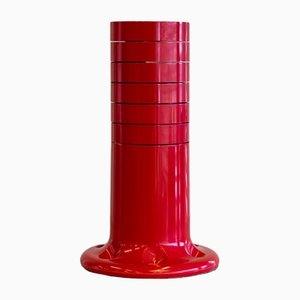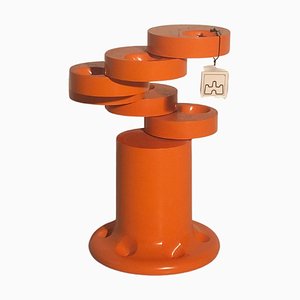
Giancarlo Piretti: Bio
Born in Bologna in 1940, Giancarlo Piretti studied at the Instituto Statale d'Arte. He went on to work for Anonima Castelli as an interior designer, creating home furniture, office furnishings and the iconic Plia chair which won him the SMAU prize as well as great critical acclaim. The folding chair has a light frame of chromium plated tubular steel and a seat and back of transparent Lucite. Functional and elegant, the Plia is only 5cm thick when folded and, to complement the wildly popular chair, he created the Plia folding table in 1969 which was similarly well received. For seven years, while he worked for Castelli, he also taught interior design at the Instituto. He is often attributed to changing the way the world thought about Italian design.
Giancarlo Piretti at Castelli
Giancarlo Piretti remained at Castelli for 12 years, and while he worked on many different designs, his innovations were mostly in seating. In the late 1970s he collaborated with Emilio Ambasz on the ergonomic seats Vertebra - an office chair with a flexible back - and Dorsal, another office chair which won numerous awards. Other notable designs by Giancarlo Piretti include the Platone, a folding desk, and Sistema 61 which was a sofa seating system.
The Later Career of Giancarlo Piretti
After moving to Castilia, a subsidiary of Castelli, he revealed The Piretti Collection in Chicago in 1988, which boasted over 50 different office chairs and seating. The notable aspect of the design is the mechanism on the back of the seats that allowed the chairs to be adjusted to the weight of the person sitting in them, and won prizes such as the UBD, the ASID, the Compasso s'Oro and the G-Mark.


